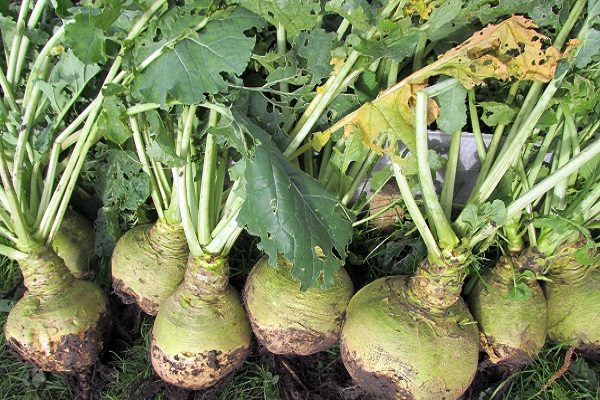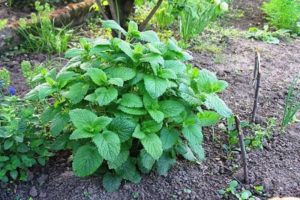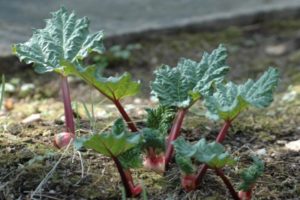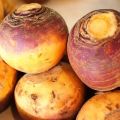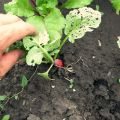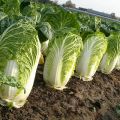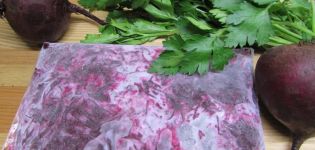Turnip pests and diseases and the fight against them with chemicals and folk remedies, how to treat and how to protect
Turnips and other cruciferous plants often wilt when attacked by harmful fungi and insects. Unfortunately, turnip pests are a fairly common problem in summer cottages. Under favorable conditions, they can damage plants and even destroy the entire crop. What diseases affect cruciferous crops and how to deal with them? Everything in order.

Turnip pests and control
Turnip belongs to cruciferous crops, which are famous for tasty and juicy roots. Unfortunately, not only people, but also harmful insects prefer to feast on them.
To protect the garden, it is important to pay attention to the condition of the plants and take effective measures if any living creatures are found on them. Below is a list of insects that often attack turnips and other cruciferous plants.
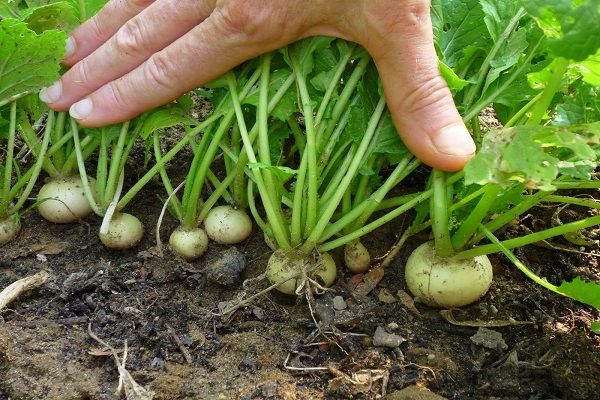
Cabbage butterfly
It is a yellowish white butterfly with black dots on its wings. An adult does not do much harm to turnips. Most often, it is the larvae that give the gardener problems. A cabbage plant can lay 300 to 600 eggs at a time on turnip leaves. Under favorable conditions, after 10-14 days they turn into voracious caterpillars, which destroy plants, eating away the juicy pulp of young leaves.
In order to preserve the harvest, it is necessary to combine several methods of processing the site from the cabbage:
- Mechanical (manual collection of tracks).
- Biological (attracting pest-eating birds).
- Chemical (spraying with insecticides and biological agents).
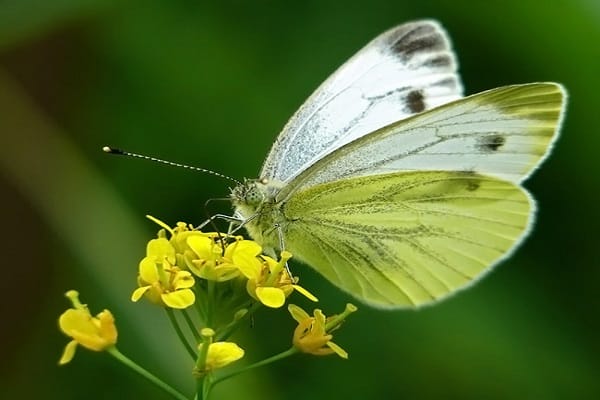
Cruciferous fleas
If the turnip foliage has acquired an openwork appearance, it means that the plant has been attacked by cruciferous fleas. Black jumping bugs belong to the leaf beetle family and attack all cruciferous plants - turnips, cabbage, rutabagas.
At the end of spring, insects end their wintering under the remains of fallen leaves and go outside for food. The peak of their activity falls on sunny and hot days. At this time, fleas especially intensively eat the foliage of cultivated plants and are able to destroy a large amount of the crop.

It is better to destroy bugs with harmless insecticides (Bankol or Aktellik) or using folk remedies. The most effective and common folk methods:
- Spraying with tobacco solution. To do this, take 100 grams of shag and fill it with 5 liters of boiled water. After cooling down, 50 grams of grated soap is added to the solution.Turnip leaves are sprayed with a spray bottle after each watering.
- Spraying with vinegar solution. 200 grams of vinegar is diluted with 10 liters of cool water. The leaves are sprayed with a spray bottle.
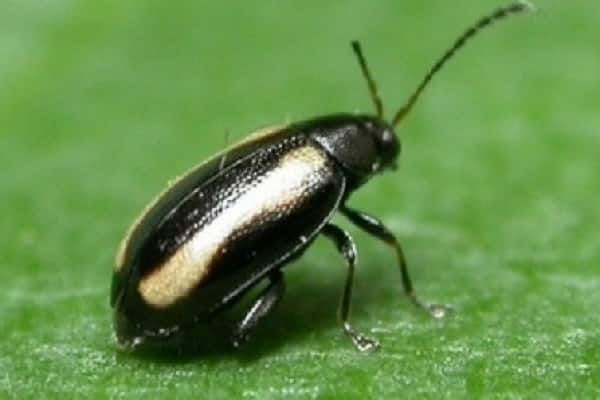
Turnip white
In appearance, the insect looks like a cabbage, but is smaller in size. Caterpillars that emerge from eggs and feed on tops or roots are considered harmful, which is extremely dangerous for turnips planted not only in a greenhouse, but also in open ground. Caterpillars are greenish-blue in color and have characteristic black dots all over the body.
Pests adapt to any weather conditions, and their life span is 20-30 days. This is enough to cause significant crop damage. To destroy harmful insects use:
- Onion infusion. A liter container is filled with onion peel, filled with boiling water and infused for 3-5 days. After that, add half of grated soap to the infusion and spray the damaged plant.
- Ordinary wasps do an excellent job with the larvae of turnip whites. To attract the Salvation Army, you need to spray the turnip beds with sweet water and wait until Mother Nature deals with the disease on her own.
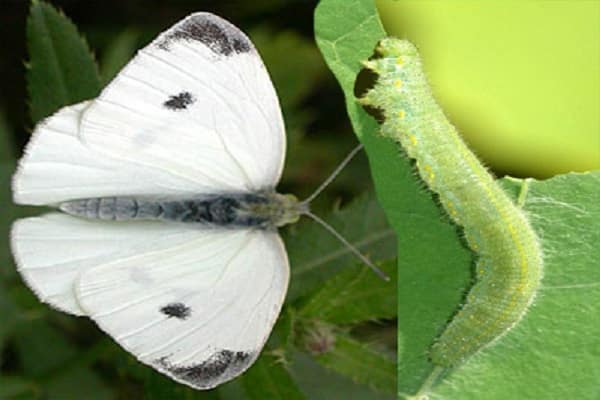
Spring cabbage fly
One of the most dangerous pests that damages the main part of the plant - the root. The spring cabbage fly is similar to the common house fly, but the former has a characteristic stripe along the abdominal cavity and is lighter in color.
Insects appear in early May and actively reproduce on the leaves of the plant, in the upper layers of the soil. The danger is represented by their small larvae, which feed on the roots of young turnip, destroying the crop in the shortest possible time.
To prevent an insect attack, it is necessary to take preventive measures by digging up the soil at the beginning of May. In this case, the larvae living in the soil will die. If small white caterpillars are found on the leaves, you need to treat the leaves with insecticides. Experienced gardeners consider Topaz ampoules, Rovikurt and Karbofoz to be the best means.
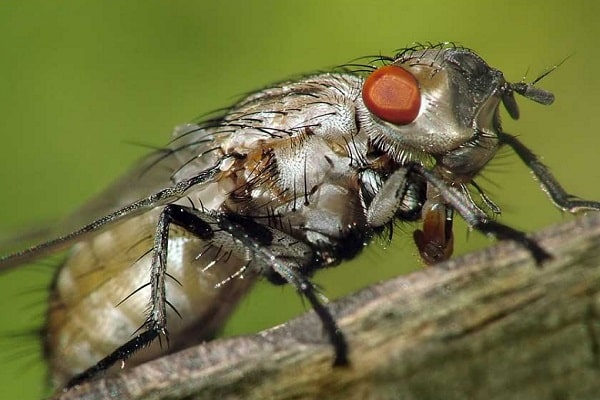
Summer cabbage fly
The summer fly appears in June-July and is a direct descendant of the spring fly. However, the first generation is more tenacious, voracious and dangerous. Therefore, if the spring attack bypassed the garden, then less aggressive control methods can be used for summer pests. For example, folk remedies. Turnip leaves can be sprayed:
- Tobacco solution.
- A solution of burdock (1 kilogram of chopped burdock leaves are poured with 5 liters of boiling water, insisted for a day and half of grated soap is added).
- Copper sulfate (1 tablespoon per 10 liters of water).
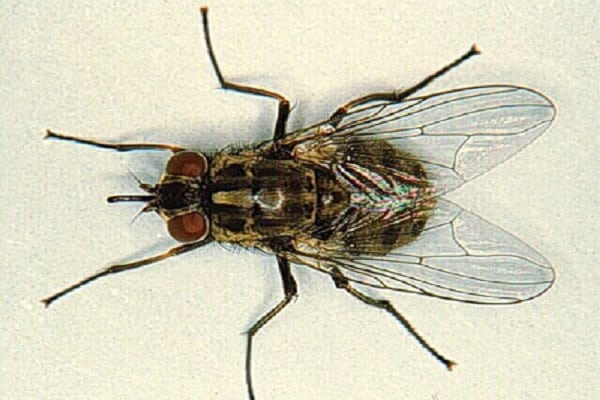
Stem nematode
Small transparent nematode worms parasitize on any part of the plant. The factor contributing to the active development and reproduction of the parasite is the increased soil moisture and rotting in the garden. Pests affect not only cruciferous, but also berry bushes, greens.
It is difficult to fight with them, since small worms are sometimes elusive to the human eye. However, their presence can still be noticed by certain signs:
- Slow germination of plants.
- Sprouts, fruits and leaves are deformed and unhealthy.
- Yellow spots appear on the leaves.
The stem nematode is destroyed by treatment with aggressive poisons - BI-58 or Ruskamin.
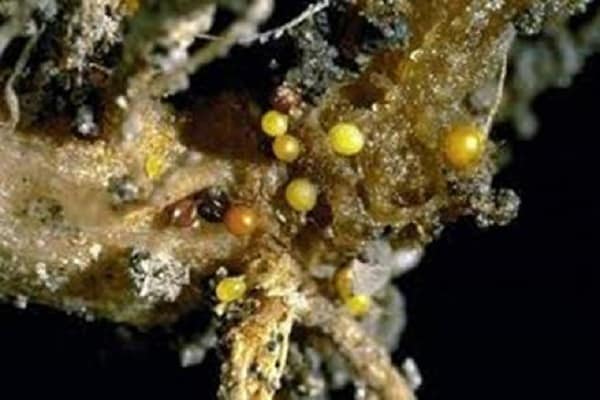
Wireworms or clickers
Females click beetles They are particularly fertile and lay a large number of eggs. From them larvae hatch, which are called wireworms. They also pose a great threat to the health of turnips.
The body of the wireworms is worm-like and brown in color. The larvae feed on the turnip pulp and gnaw it from different sides. Living in the ground, the pest does not disdain the rest of the plant - stems and roots.In some cases, the larva of the nutcracker destroys the entire crop even before the first shoots appear.
When planning agrotechnical measures to combat the pest, the main rules must be observed - deep plowing in the fall and weed control. If insects do appear on the turnip, insecticide treatment is necessary in accordance with the instructions. Effective chemicals against wireworms - Tabu, Prestige and Aktara.

Garden scoop
Scoops are moth-like polyphagous pests. There are about 100 species of these insects, but the most dangerous for the garden is the garden scoop. The caterpillars of garden scoops appear in the spring and cause significant damage to the turnip crop. They completely eat the leaves, as well as the pulp of the fruit, gnawing deep holes in it.
To eliminate pests, gardeners often resort to the help of their natural enemies - frogs, wasps and sparrows. If they could not completely rid the garden of the scoops, they will have to use a more reliable weapon - insecticides.
However, do not forget that it is important to spray at least a month before harvesting. Otherwise, toxic substances remain on the plant that can harm human health.
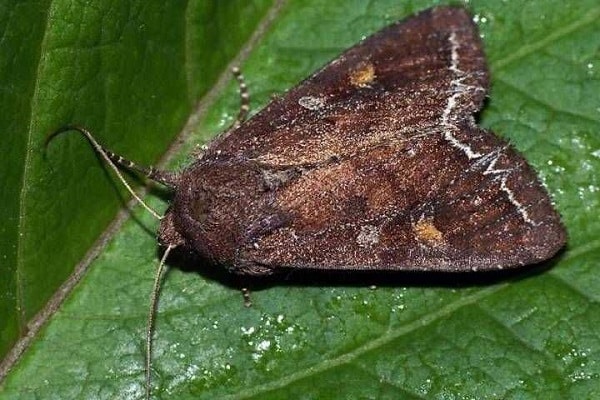
Cabbage scoop
Another harmful representative of the scoop species. Despite the name, the pest eats not only cabbage leaves. Gluttonous larvae do not mind eating fresh turnip leaves and even its pulp. Pest control methods are standard - weeding, insecticides (for example, Eurodim or Akiba), ethnomophages (frogs, wasps, birds).
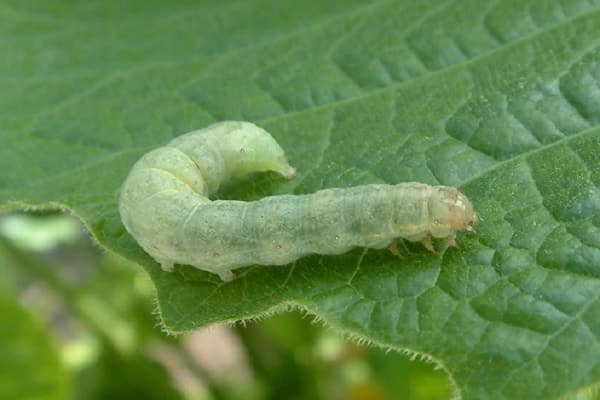
How to prevent pests
The most effective pest control method is to prevent them from emerging. Therefore, it is necessary to pay attention to the state of the plantings and take some preventive actions:
- Dig up the soil in the spring so that any harmful insects hibernating in it will die.
- Timely fight against weeds that attract cabbage or scoop butterflies to the garden.
- Apply mineral fertilizers.
- In the immediate vicinity of turnips, you need to plant wormwood, celery or marigolds. Their smell repels insects.
- The ridges are mulched with coarse wood chips or covered with dark non-woven material so that flying pests cannot lay eggs on plant leaves.
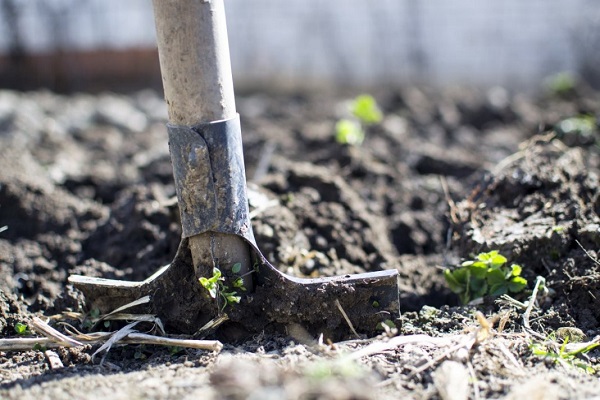
Turnip diseases and fight against them
In addition to the attack of gluttonous insects, turnips and other cruciferous plants infect fungi and harmful microorganisms. The following diseases are most common.

White rot
Appears during the growing season or in high humidity during storage. A fluffy white coating forms on the turnip, which provokes rotting of the fruit. To combat white rot, it is necessary to follow the watering rules, as well as cut off the infected areas.
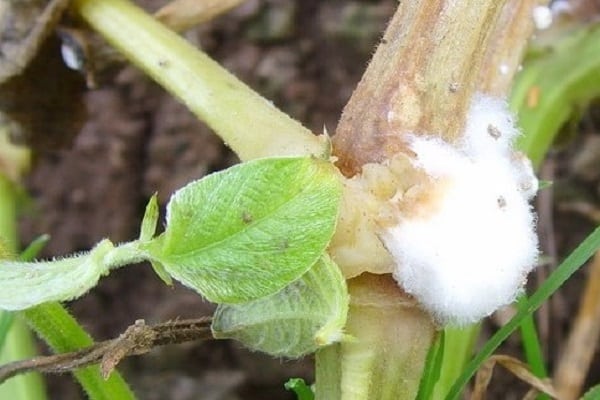
Gray rot
The cause of infection is rotting in high humidity or poor garden hygiene. The fungus is dark gray in color and reproduces in plant debris. To protect turnips from gray rot, you need to store the roots in a dry place and do not overdo it with watering.
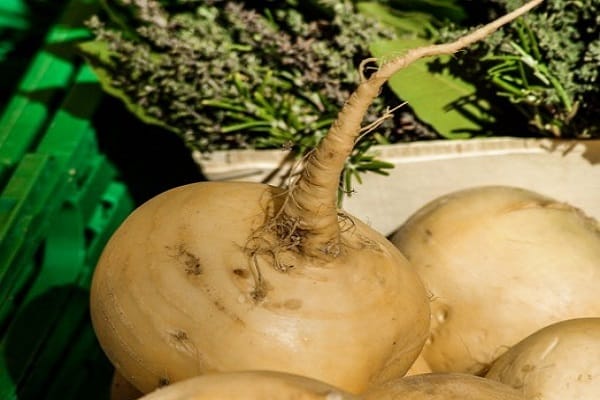
Blackleg
It affects young seedlings not only of turnips, but also of other cultures. With a disease, the root collar of the plant softens and turns black, and the stalk becomes thinner, forming a characteristic constriction. The development of the disease is facilitated by the high humidity of the air and soil, the presence of a large amount of plant residues.
To get rid of the disease, you need to disinfect the soil with bleach. Thickening of seedlings and soil compaction should not be allowed.
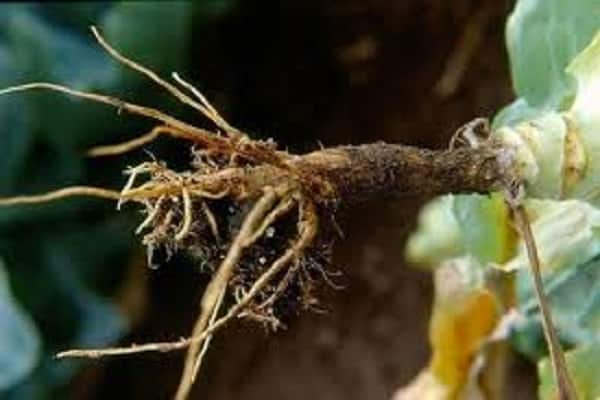
Peronosporosis
It affects leaves and root crops. Yellow oily spots are formed on the upper side of the leaves, which grow and cause the death of seedlings. The development of the disease is facilitated by prolonged heavy rainfall.
The infection persists on seeds and plant debris (therefore, they must be burned). An effective way to combat is heating the seeds in hot (48-50 ° C) water for 20 minutes, followed by cooling in cold water and drying.
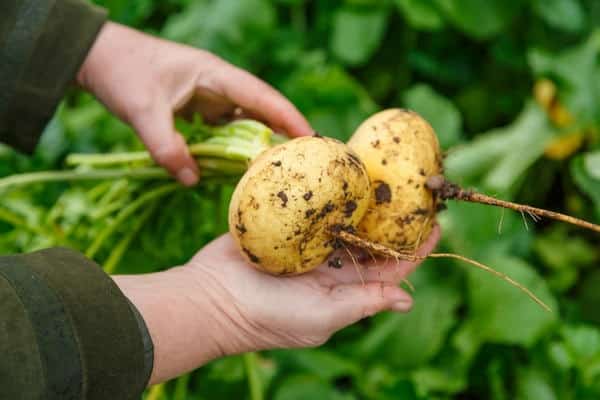
Powdery mildew cruciferous
The fungal infection is spread by insects and wind. The first symptom of the appearance of dew is a powdery white coating on the leaves, petioles or shoots of the plant. The fungus attacks with sharp fluctuations in air temperature, as well as if the gardener applies too large doses of nitrogen fertilizers, which reduces the turnip's immunity to harmful microorganisms.
The disease is treated with fungicides, which are sold in specialized stores. The best of them are Skor, Previkur, Switch, Vectra.
